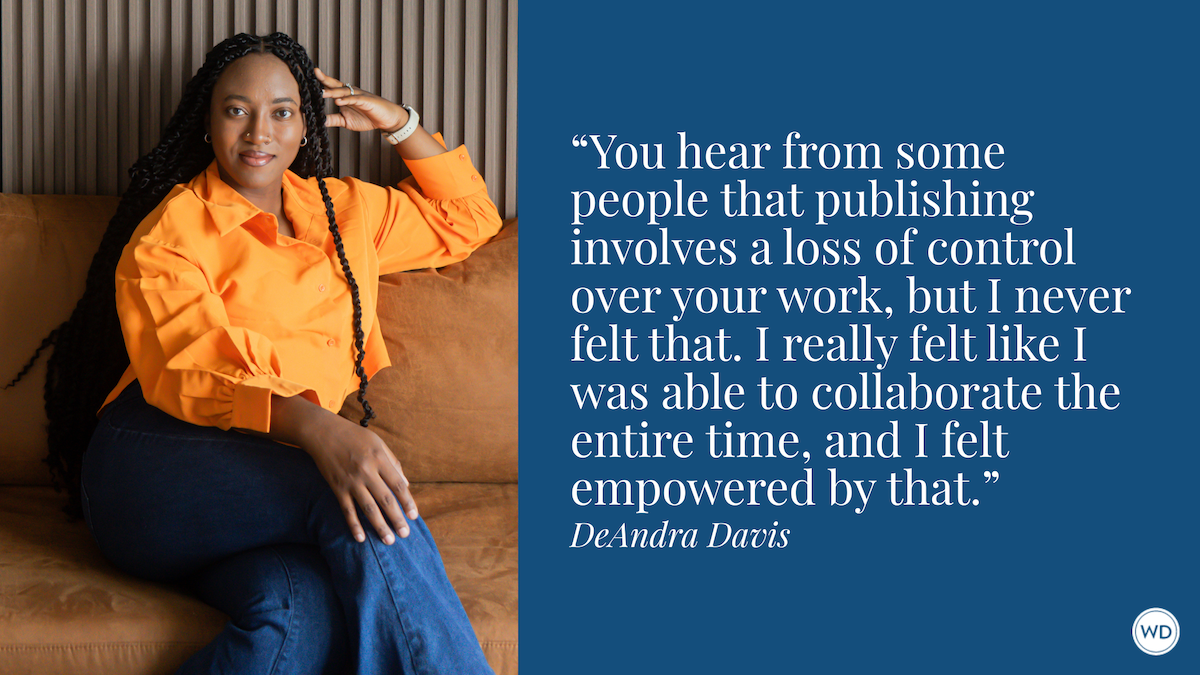The Void Deck: Giving Readers the Agency To Fill Spaces in Fiction
Bestselling author Balli Kaur Jaswal discusses offering readers context vs. giving them the answers to allow them to fill in the spaces on their own.
“What’s a void deck?”
I had anticipated this question when I submitted my story for workshop that week. Several of my classmates peered curiously at me but I was bound by workshop conventions to sit silently while they worked it out.
“An empty deck?”
“It sounds like it’s underground though.”
“But she writes about a guy cycling through it. And there’s a concrete mahjong table?”
“We’ll get to that one. I have questions about how all these things look together.”
This was in the early 2000s, when I was in an undergraduate creative writing program in Virginia. In my sophomore year, I began sketching the first chapters of what would become my novel Sugarbread. It was a coming-of-age story about a Punjabi-Sikh girl living in a public housing estate in Singapore and attending a prestigious school, all while discovering secrets in her family’s past that held clues to her identity. Grappling with multiple degrees of prejudice—race, class, gender, religion—the protagonist Pin experiences both affinity and alienation from her home country.
Pin’s experience wasn’t too removed from mine; in fact, Sugarbread is my most autobiographical novel. I was determined to write about Singapore the way Pin and I knew it, with details that were uniquely specific to this country. But my audience was my American classmates, who raised questions about the language and began debating each other over what exactly Singapore looked like.
I had been in their shoes throughout my childhood as a reader, when the only novels available in English were set in America or England. I had no idea what a bologna sandwich was (only that it sounded divine) or what on earth people did at pep rallies. I was intrigued by words like Grey Poupon, Kleenex, and Xerox, years before I understood that brand names were used to identify items. By the time I graduated from high school, I could name all 50 states of the union and some of their capitals, without ever having set foot in one. The geography and history of the United States had never been explicitly taught to me, but I had imbibed this knowledge from fiction.
As I began writing fiction, I saw little reason to explain the names of places or things in Singapore. I had spent my whole life building bridges in my mind between language, context, and meaning. The process enriched rather than distracted me from the story. I feared that somebody in my workshop group would suggest footnotes or a glossary, but my classmates were delighted with the immersion into a new place with its own language conventions and quirks. Without coming to a consensus about what a void deck was, they moved on to the rest of the story.
The issue of language came up again many years later, when I was writing my novel Now You See Us. Spotlighting the stories of Filipina domestic workers in Singapore, I wanted the novel to showcase the multitudes of cultures that characterize this diverse country. Weaving Singlish and Tagalog phrases into the dialogue, I considered how to convey their meanings to readers outside Singapore.
Authors can integrate definitions into the exposition. In an early scene in Now You See Us, a police officer looks through a Filipina’s kikay kit. I wrote: “He begins to search Donita’s bag and pulls out her kikay kit—a small pink pouch for grooming essentials.” Later in the story, falling in love makes Donita experience a sensation that she can only describe as kilig. I described it as: “that fluttery feeling that overcomes her.” By striking a balance between using culturally specific words and lightly defining them in the context of the story, I was able to avoid breaking the narrative role for the sake of informing.
Contextualizing and elaboration are key, but they must not detract from the narrative. In one scene, a character cooks lor ark. I wrote: “Cora returns to the kitchen counter and begins taking out the tau pok and tau kwa to add to the dish once the duck is finished cooking. In a separate pot, she boils four eggs that she will arrange around the sliced duck along with squares of firm tofu which will be glazed in leftover marinade.” Reading this description, you would have a sense of what the lor ark is without a footnote that it is a Teochew braised duck dish.
Years after I graduated from college, a friend from Virginia visited me in Singapore. As we walked through the void deck of my building, I remembered that she was one of the people in the creative writing class where I first began workshopping Sugarbread. “What would you call this, if you were trying to describe it for an American reader?” I asked.
She looked around. “Parking garage,” she said.
“But cars don’t park here.”
“Basement?” she said. “No, it’s more like an open-air lobby.”
“It’s a void deck,” I informed her. I reminded her of the debate in our workshop where everyone chimed in to decipher that mysterious phrase.
She looked around slowly. “It’s what I imagined, but also not.”
To me, the beauty of fiction is in the agency the author gives to the reader. It is also in the discoveries that the reader makes for themselves, and the spaces between their experiences and their imaginations. The void deck never had to be defined in detail—a reader unfamiliar with the term would create their own version. Would it be completely accurate? Probably not, but don’t we always project images from our experiences and perceptions onto a story? The details are not so much lost in translation as gaining new varieties.
World-building is about inviting the reader into unfamiliar territory with the assurance that they will be given enough tools to navigate their way around. Readers start off as visitors and as the story progresses, they become residents. A sense of intuition develops along with a growing vocabulary. When we read about worlds other than our own, we gain a broader and more complex relationship with language, which provides us with authentic ways of experiencing new places and cultures.
Balli Kaur Jaswal is the author of five novels, including Erotic Stories for Punjabi Widows, which was a Reese Witherspoon's Book Club pick in 2018. Born in Singapore and raised in Japan, Russia and the Philippines, Jaswal studied creative writing at Hollins University in Virginia and worked as an English teacher in Australia and Turkey. She has held fellowships at the University of East Anglia and Nanyang Technological University, where she also completed her PhD in South Asian diaspora writing. Jaswal's nonfiction has appeared in the New York Times, Harper's Bazaar India, Refinery29 and Salon.com, among other publications.








